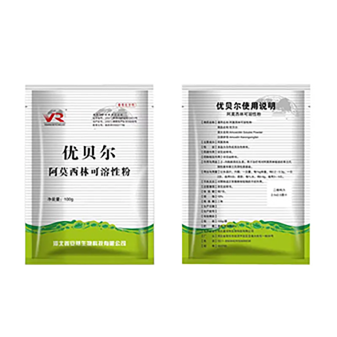- Afrikaans
- Albanian
- Amharic
- Arabic
- Armenian
- Azerbaijani
- Basque
- Belarusian
- Bengali
- Bosnian
- Bulgarian
- Catalan
- Cebuano
- Corsican
- Croatian
- Czech
- Danish
- Dutch
- English
- Esperanto
- Estonian
- Finnish
- French
- Frisian
- Galician
- Georgian
- German
- Greek
- Gujarati
- Haitian Creole
- hausa
- hawaiian
- Hebrew
- Hindi
- Miao
- Hungarian
- Icelandic
- igbo
- Indonesian
- irish
- Italian
- Japanese
- Javanese
- Kannada
- kazakh
- Khmer
- Rwandese
- Korean
- Kurdish
- Kyrgyz
- Lao
- Latin
- Latvian
- Lithuanian
- Luxembourgish
- Macedonian
- Malgashi
- Malay
- Malayalam
- Maltese
- Maori
- Marathi
- Mongolian
- Myanmar
- Nepali
- Norwegian
- Norwegian
- Occitan
- Pashto
- Persian
- Polish
- Portuguese
- Punjabi
- Romanian
- Russian
- Samoan
- Scottish Gaelic
- Serbian
- Sesotho
- Shona
- Sindhi
- Sinhala
- Slovak
- Slovenian
- Somali
- Spanish
- Sundanese
- Swahili
- Swedish
- Tagalog
- Tajik
- Tamil
- Tatar
- Telugu
- Thai
- Turkish
- Turkmen
- Ukrainian
- Urdu
- Uighur
- Uzbek
- Vietnamese
- Welsh
- Bantu
- Yiddish
- Yoruba
- Zulu
Δεκ . 16, 2024 09:38 Back to list
tylosin tartrate injection formulation
Tylosin Tartrate Injection Formulation An Overview
Tylosin tartrate is a macrolide antibiotic that has been widely used in veterinary medicine for the treatment of bacterial infections in animals, especially in poultry and swine. Its effectiveness in combating a variety of pathogens, coupled with its relatively low toxicity, makes it a popular choice for managing infections. This article will provide an overview of the formulation of tylosin tartrate injection, including its composition, preparation, administration, and considerations for use.
Composition of Tylosin Tartrate Injection
Tylosin tartrate injection is typically formulated to include several key components. The active ingredient is tylosin tartrate, which is the tartrate salt of tylosin, a fermentation-derived antibiotic produced by Streptomyces fradiae. The formulation may also include excipients such as stabilizers, pH adjusters, and solubilizers to ensure the stability and efficacy of the product. A typical formulation may contain solvents like sterile water for injection, sodium chloride for isotonicity, and others to enhance solubility.
The concentration of tylosin in the injection can vary depending on the intended use and the manufacturer's guidelines. Standard concentrations range from 100 mg/mL to 200 mg/mL, allowing for flexibility in dosing based on the severity of the infection and the species being treated.
Preparation of Tylosin Tartrate Injection
The preparation of tylosin tartrate injection involves a series of careful steps to ensure the product's safety and effectiveness. First, the active ingredient is dissolved in a suitable solvent, often using heat to facilitate complete dissolution. Once the tylosin is fully dissolved, the solution is typically filtered to eliminate any particulate matter, ensuring a sterile product.
After the filtration process, the formulation is adjusted to the desired pH, which is crucial for maintaining the stability of tylosin. The final step involves aseptic filling into glass vials or ampoules, which are then sealed to prevent contamination. Proper labeling, including dosage instructions and expiration dates, is also essential to ensure safe use.
Administration of Tylosin Tartrate Injection
tylosin tartrate injection formulation

Tylosin tartrate injection is primarily administered via intramuscular or subcutaneous routes, depending on the animal's condition and the clinical guidelines provided by veterinarians. The dosage can vary based on factors such as the species of the animal, age, weight, and the severity of the infection. Generally, the recommended dosage for swine and poultry ranges from 10 mg/kg to 50 mg/kg body weight, administered according to the veterinarian's advice.
Care should be taken to rotate injection sites to minimize tissue irritation and damage. Additionally, veterinarians often recommend monitoring the animals post-administration for any adverse reactions, which may include local inflammation at the injection site or gastrointestinal upset.
Considerations for Use
While tylosin tartrate is generally considered safe for use in animals, there are several essential considerations for veterinarians and animal owners. First, the development of antibiotic resistance is a significant concern with any antibiotic use. Therefore, tylosin should only be administered when necessary, and its use must follow veterinary advice and local regulations.
Secondly, tylosin tartrate may have implications for meat withdrawal times, which refers to the duration an animal must be kept without the drug before slaughter to ensure no residues remain in the meat. This is particularly important in livestock intended for human consumption to comply with safety regulations.
Lastly, tylosin can interact with other medications, affecting their efficacy or increasing the risk of adverse effects. Veterinary consultations are crucial when combining treatments to avert potential drug interactions.
Conclusion
Tylosin tartrate injection is a valuable tool in veterinary medicine for managing bacterial infections in livestock and poultry. Its careful formulation, preparation, and administration can lead to successful treatment outcomes, provided that it is used judiciously. By understanding its composition, preparation processes, and administration guidelines, veterinarians can ensure the safe and effective use of tylosin tartrate in their practice, ultimately improving animal health and welfare.
-
Guide to Oxytetracycline Injection
NewsMar.27,2025
-
Guide to Colistin Sulphate
NewsMar.27,2025
-
Gentamicin Sulfate: Uses, Price, And Key Information
NewsMar.27,2025
-
Enrofloxacin Injection: Uses, Price, And Supplier Information
NewsMar.27,2025
-
Dexamethasone Sodium Phosphate Injection: Uses, Price, And Key Information
NewsMar.27,2025
-
Albendazole Tablet: Uses, Dosage, Cost, And Key Information
NewsMar.27,2025













